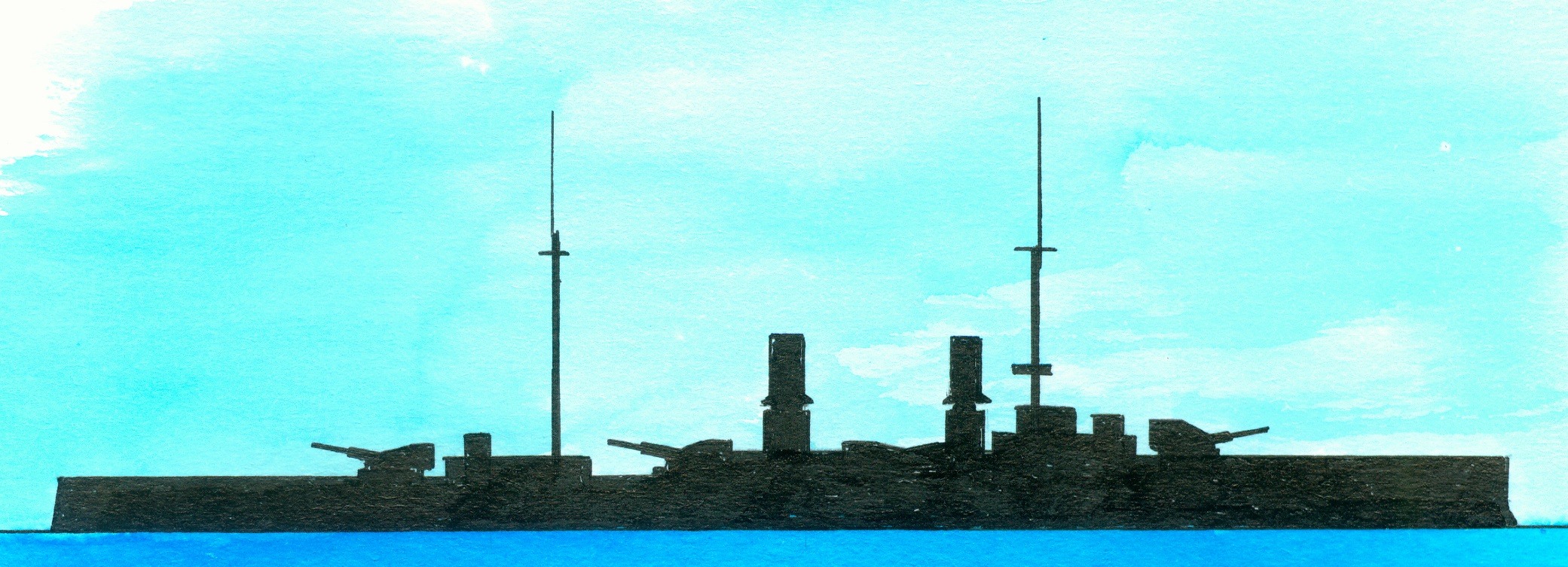With a displacement of 15,592 long tons/15,842 tons (design)-17,200 long tons/17,500 tons (full load) were her dimensions 161,1 (waterline)-161,8 (over all) x 24,5-25,62 (with anti-torpedo nets) x 8,84 (forward)-8,56 (aft) metres or 528’7”-530’10”x 80’5”-84’1”x 29’0”-28’1”. Her 3-4 cylinder vertical triple expansion engines and 18 coal-fired marine-type boilers supplied during her trials in 1909 43,886 ihp and while each engine independen drive one of the three screws she had a maximum speed of 24,5 (design)-25,4 (trials) knots. The coal bunker capacity of 800 tons (design)-2,5210 tons allowed with a speed if 12 knots a range of 6,600 nautical miles and with 18 knots 3,250 nautical miles. Her crew numbered 1,026 men when she met her final fate. She was armed with 6x2-21cm (8.3”) guns, placed one turret fore and one aft and on either side of the superstructure two turrets, 8-15cm (5.9”) in casemates, 4 on each side, 16-8.8 cm (3.46”) and 4x1-45cm (18”) torpedo tubes below the waterline, one in the bow, a second one in the stern and on each side one. The armour consisted of a 6-18cm thick belt, the battery by 14cm, the barbettes by 18cm, the turrets by 6-18cm and the conning tower by 8-25cm.
Note
1. Gebhard Leberecht von Blücher (16 December 1742 Rostock-12 September 8191 Krieblowitz), Prussian Field Marshal during the battle at Waterloo in 1815.



